Content
Published:
This is an archived release.
Still high, but fall in immigration
In 2013, there were 75 800 immigrations to Norway from other countries, which is 2 780 fewer than the previous year. The total emigration was 35 700. The net migration figure was slightly lower in 2013 than the previous three years, but nevertheless still high.
| 2013 | Change in per cent | |||
|---|---|---|---|---|
| Immigration | Emigration | Net immigration | Net immigration | |
| 2012 - 2013 | ||||
| Total | 75 789 | 35 716 | 40 073 | -15.3 |
| Norway | 8 855 | 10 680 | -1 825 | 33.1 |
| Foreign | 66 934 | 25 036 | 41 898 | -14.0 |
| Poland | 10 502 | 3 093 | 7 409 | -21.5 |
| Lithuania | 5 573 | 1 172 | 4 401 | -27.1 |
| Sweden | 5 271 | 4 215 | 1 056 | 0.9 |
| Latvia | 1 349 | 456 | 893 | -39.5 |
| Eritrea | 2 729 | 73 | 2 656 | 15.1 |
| Germany | 1 597 | 1 454 | 143 | -76.2 |
| Somalia | 2 765 | 190 | 2 575 | -24.1 |
| Afghanistan | 990 | 72 | 918 | -20.9 |
| Philippines | 2 815 | 1 079 | 1 736 | 20.3 |
| Iceland | 1 104 | 715 | 389 | -38.5 |
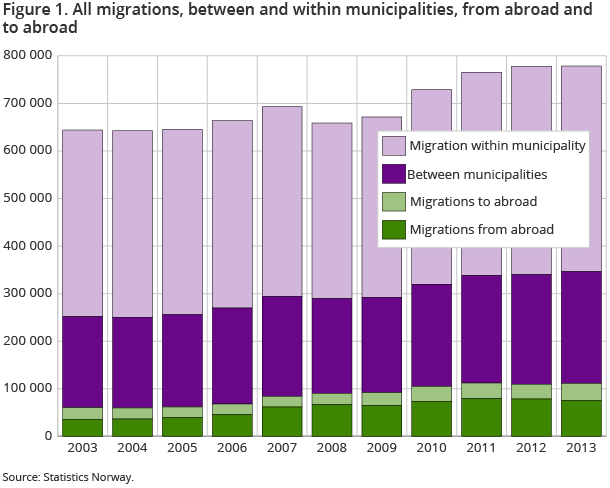
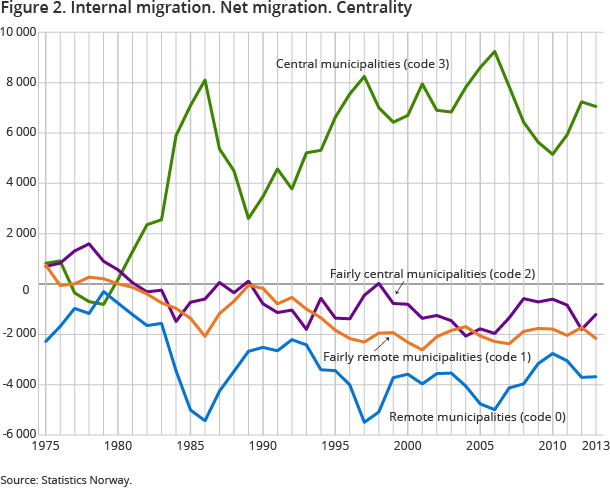
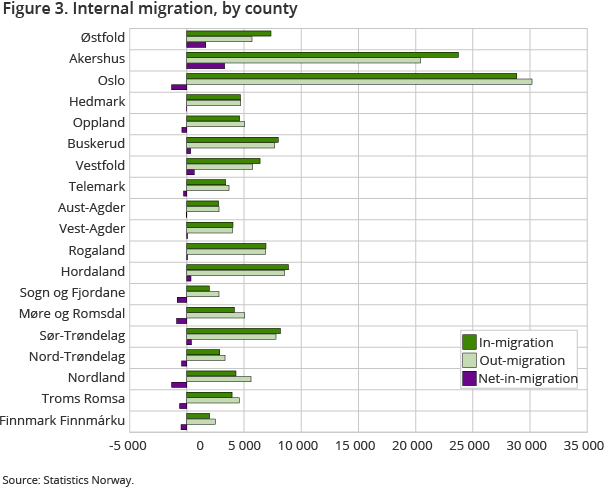
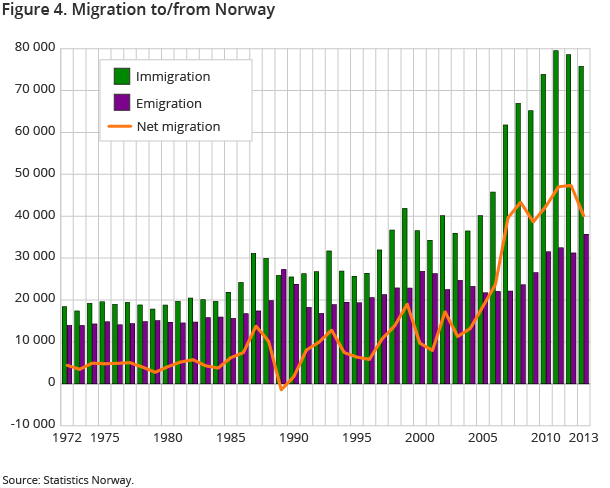
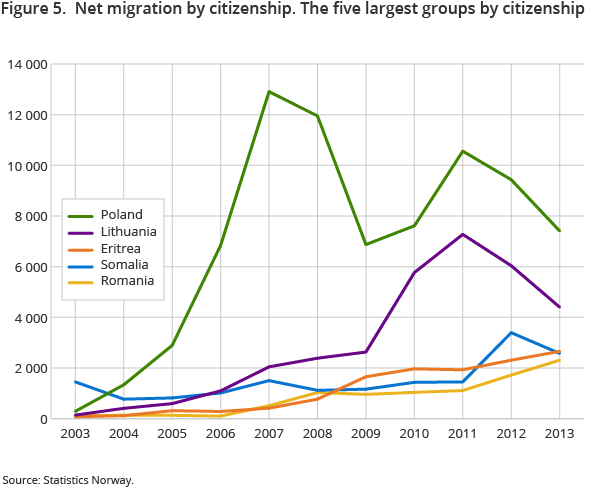
The 35 700 emigrations, which is 4 500 more than 2012, is the highest registered number of emigrations ever. The high number of emigrations is due to the fact that the Tax Administration has registered persons who emigrated several years ago without reporting that they emigrated. Persons who come to Norway and stay for less than six months are not considered as immigrated, and persons who leave Norway for less than six months are not considered as emigrated.
The net migration of foreign citizens decreased from 48 700 in 2012 to 41 900 in 2013. Of these, 25 800, or 62 per cent, made up the net migration of European citizens. In 2012, the corresponding figure was higher, at 30 900. The net migration of non-European citizens decreased, from 17 800 in 2012 to 16 100 in 2013.
Most immigration of Polish and Lithuanians
Polish and Lithuanian citizens are still the two groups with the highest net migration, and made up about half the net migration among those with European citizenship. Of the ten groups with the highest net migration, six were European, and labour was the most important reason for immigration, as it has been since 2007. Refugees from Eritrea and Somalia are the third and fourth largest groups. Compared to 2012, we find the highest decrease in the net migration among citizens from Poland, Lithuania and Somalia. The net migration among citizens from Romania, Syria and Eritrea increased the most. The net migration of Swedish citizens was roughly unchanged.
Higher number of migrations between municipalities
The number of internal migrations shows a great mobility in the population. The number of migrations between municipalities increased to 235 000 in 2013, which is the highest number ever, and 4 500 more than in 2012. There were 432 100 migrations within municipalities, which is 5 700 fewer than 2012.
Migrations contributed to the further centralisation of settlement, and on 1 January 2014, 68 per cent of the population lived in the 150 most central municipalities.
The municipalities in the central areas (code 3) had a migration surplus of 7 050 in 2013, which is a small decrease from 2012. The rest of the municipalities had a net migration loss. The fairly central municipalities had a loss in net migration of 1 200, and less central municipalities had a migration loss of 2 200. The net migration loss for the least central municipalities was at about the same level as in 2012, with 3 700.
Largest domestic migration surplus to Akershus and Oslo
Østfold and Oslo had the greatest domestic migration surplus with 5 000, compared to the rest of the country. Eight of the counties had a domestic migration surplus, and the other 11 counties had a domestic migration loss.
The internal migration loss was greatest in Oslo and Nordland, with 1 300 more out than in migrations in each county. Many of those who move from Oslo move to Akershus, while many of those who move from Nordland move considerably farther away. As a percentage of the population, migration loss was greatest in Sogn og Fjordane, followed by the three northern counties.
Contact
-
Statistics Norway's Information Centre
E-mail: informasjon@ssb.no
tel.: (+47) 21 09 46 42
-
Oppdrag befolkningsstatistikk
E-mail: befolkning@ssb.no
-
Even Høydahl
E-mail: even.hoydahl@ssb.no
tel.: (+47) 95 77 79 06
